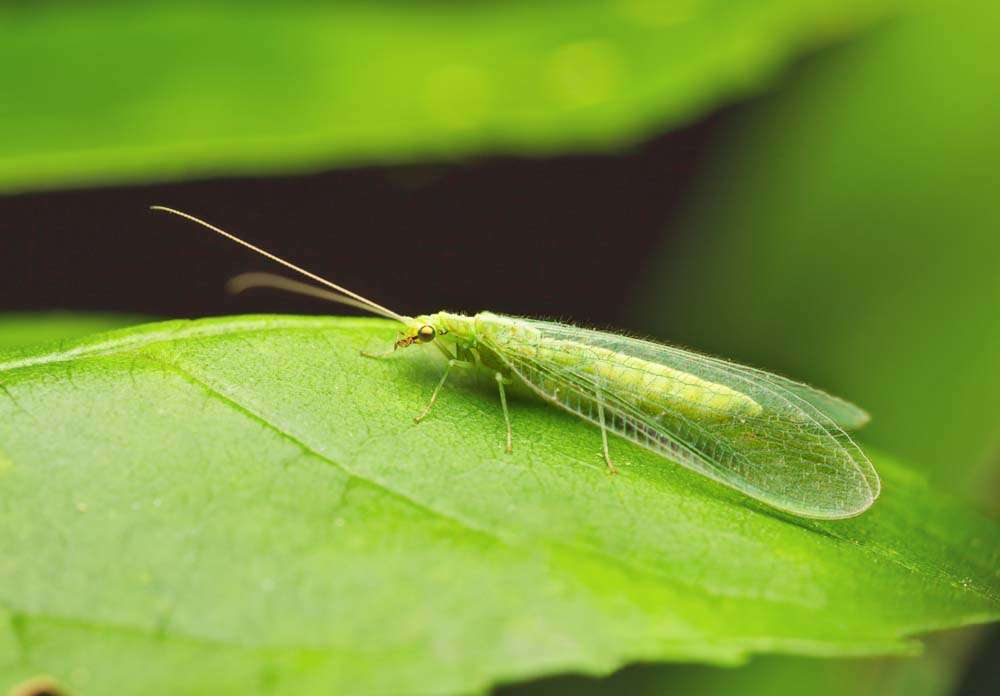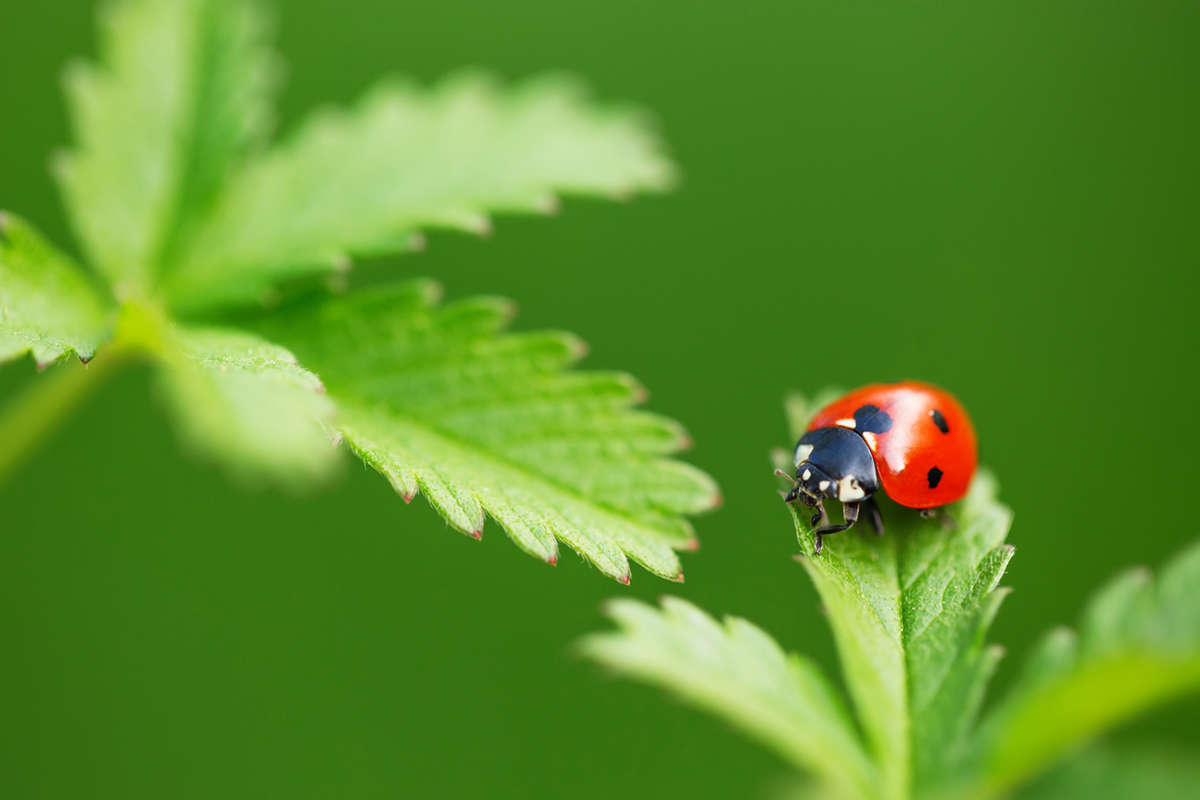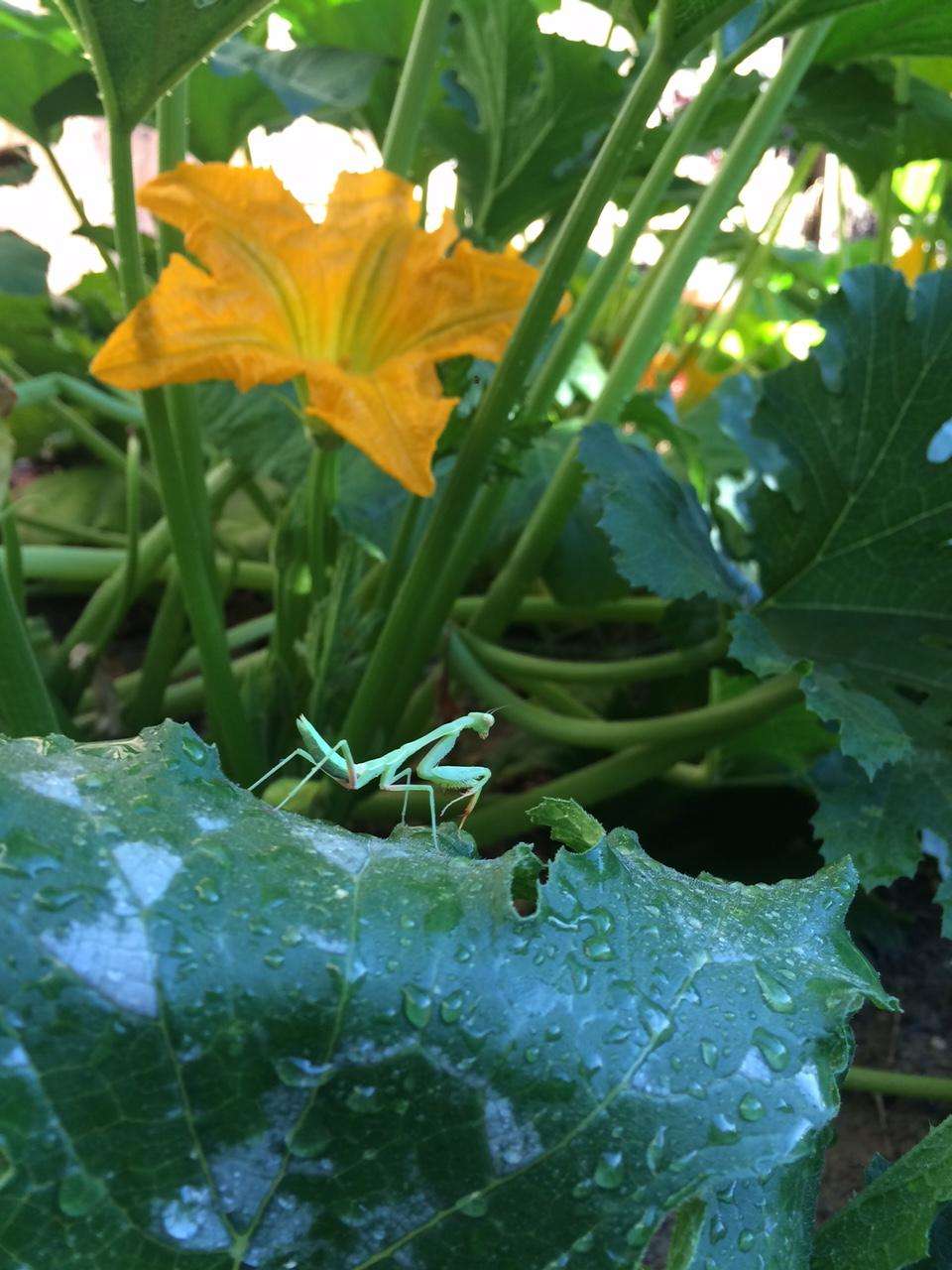
Integrated Pest Management
Intro to Integrated Pest Management

Integrated Pest Management (IPM) is a system of long term preventative pest control techniques which affect only the targeted pest with minimal harm inflicted on the surrounding environment. IPM means:
- Taking measures to encourage the health of your plants
- Taking measures to avoid creating conditions which are favorable to pests
- Closely monitoring your plants on a regular basis in order to prevent and catch pest problems before they get out of hand
- Using less toxic control methods when possible

What is a pest?
Any insect, fungus or animal which causes direct harm to your plants.
What is not a pest?
A pest is any organism that does not cause harm to your plants. Practicing IPM means seeing a bug you don’t recognize and doing a little research instead of immediately reaching for the bug killer. You might just have the natural “pesticide” in your hands.
Read On: Beneficial Insects
Encourage Healthy Plants
An unhealthy plant sends out chemical signals which attract insect pests directly to it. Step one of IPM is researching your plants, knowing what they need to be healthy, and setting up your garden so that each plant has the environmental conditions they need. Consult with our knowledgeable staff at Green Acres Nursery & Supply to learn more about what conditions your plants need to grow.
An unhealthy plant sends out chemical signals which attract insect pests directly to it. Step one of IPM is researching your plants, knowing what they need to be healthy, and setting up your garden so that each plant has the environmental conditions they need. Consult with our knowledgeable staff at Green Acres Nursery & Supply to learn more about what conditions your plants need to grow.
Avoid Creating a Pest Paradise
Just like learning what your plants need in order to thrive, it’s good to learn what environmental conditions the pests like so you can avoid them. For example, over-watering your lawn can lead to fungal diseases and weeds. Experiment to see what the minimum water requirements are for your lawn and cut down on excess water usage to address those problems.
Monitor Your Garden
The most important step in practicing IPM is careful monitoring. If you catch small problems before they get too big, then you won’t have to resort to harsh methods of pest control. Ideally, you ‘ll take a walk around your garden every day. Once you spot something abnormal, take a sample or a picture into one of our Green Acres Nursery & Supply locations for help identifying the potential problem.

Less Toxic Methods of Control
Sometimes our best efforts may not be enough. This calls for the application of one of four control techniques. Use them to get your plants back on track, without throwing the ecosystem of your garden out of whack.
4 Methods of Control
Biological Controls
For every insect pest which causes damage to your plant, there is a natural predator that attacks and destroys it. IPM encourages you to avoid using broad-spectrum insecticides, because they may kill just as many good bugs as bad bugs. Learn to identify beneficial insects and make your garden a welcoming environment for them by providing a variety of flowers as a food source.
Read On: How to Create a Pollinator Paradise
Cultural Controls
Cultural control means changing your gardening practices if you find that you have accidentally created favorable conditions for pests. For example, if you have your rose bushes too close together, you may have fungal issues due to poor air circulation. The cultural control solution is to transplant them so they have enough space. Don’t be discouraged if you’ve made a mistake in your cultural practices. Gardening requires patience and a willingness to learn, and if you're practicing IPM you obviously have both.
Mechanical and Physical Controls
Mechanical and physical controls are the best way to directly kill or deter pests without using any kind of chemicals. They are usually only effective if you catch the pests early, so keep up with your monitoring. Examples of physical controls are spraying aphids with the hose, adding a thick layer of mulch to keep the weeds down, and putting up nets to protect your harvest from the birds.
Chemical Controls
When the pest problem becomes too severe to be remedied with the above methods alone, it’s time for chemical control. Choose pesticides with minimal residual impact on the environment, target the pest you are combating specifically, and apply sparingly to the affected plants. Always follow label instructions to avoid unintended contamination of air, soil or water sources.
For more information on Integrated Pest Management, check out the
UC Statewide Integrated Pest Management Program.
UC Statewide Integrated Pest Management Program.
* For help identifying unknown pests, please bring a picture or a sample to one of our locations and our experts will identify and prescribe a solution if needed.
